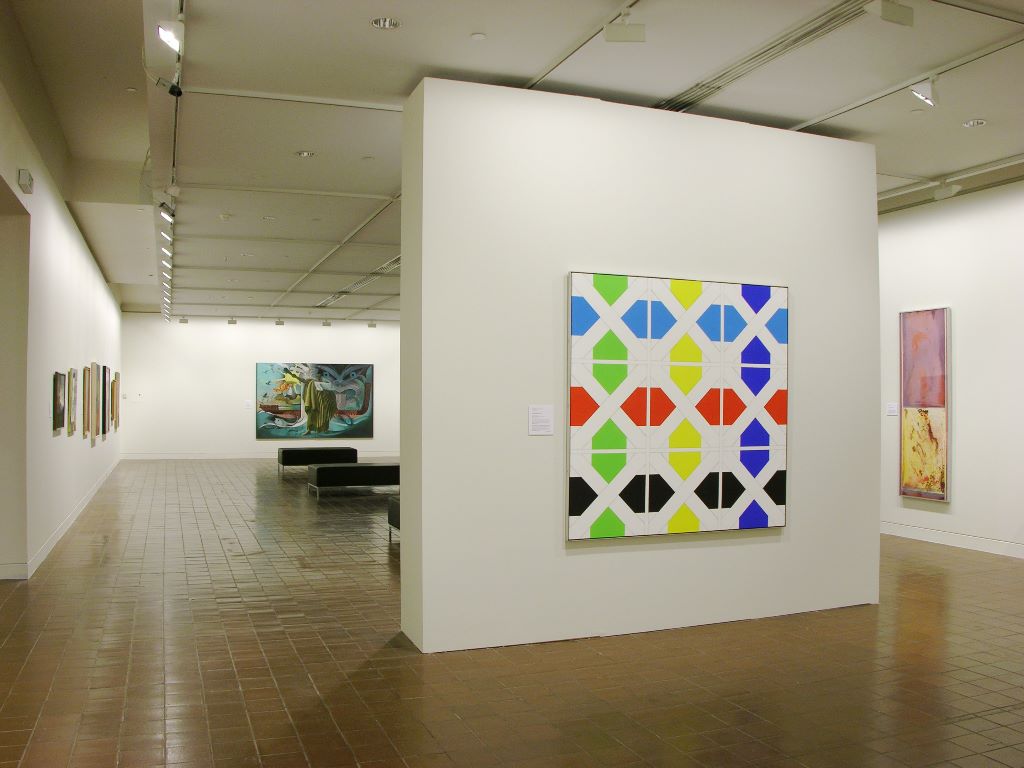—

exhibition Details
Modernism and the New Zealand Landscape Tradition 1956-1977
I find difficulty in approaching the idea of New Zealand painting as a subject for discussion. Two things which often pass for it have, to my mind, nothing to do with painting in its serious sense at all. One is a sort of 'advertise New Zealand' activity - making pictures which can always be recognised by non-painting people as 'scenery'. The practitioners of this sort of work find a ready market for their wares with both tourists from overseas and the tourist-minded at home, as well as with our own class of the 'nouveau-riche', who like to have at once the prestige of owning of what they call an 'original', and the comfort of its flattering unoriginality. These artists (or rather, craftsmen) also hope for success in a prize-winning competition which, year by year, confirms them in the belief that what they aim to do is not only painting, but the best painting in the country, because the prize offered is the largest for a single painting.
-Toss Woollaston The Far-Away Hills 1962
Representation and Reaction revisits the battlefield of contemporary art from the late 1950s into the 1970s. Back then the fight was between traditional landscape painting and a modernism rooted in abstraction. This show juxtaposes works from two art collections, the Kelliher and Fletcher Trusts; each aligned with a different side.
It is many years since paintings in the Kelliher Trust Collection have been exhibited, but even now the mere mention of the Kelliher Art Award to anyone old enough to remember is enough to incite a spirited exchange of views. The Award, from which the Trust acquired the works, was presented annually from 1956 until 1977. It called upon artists 'to paint the visible aspects of New Zealand's landscape and coastal scenes in a realistic and traditional way'. Paintings were to be in oils and measure not less than seven and a half square feet, and completed within the previous year. The Award reflected the taste of the DB beer baron, Sir Henry Kelliher, who founded and funded it. The prize-winning paintings were illustrated in newspapers and magazines nationwide. At the 1961 Award opening at the National Art Gallery Kelliher explained that landscape paintings were a healthy and stimulating influence on traditional art in New Zealand and that the faithful portrayal of the beauties of nature were the gift of an all-wise creator.
Founded by Sir James Fletcher in 1962, the Fletcher Collection was initially devoted to historic New Zealand watercolours. However, in 1967 it was decided to embark on a collection of contemporary painting. The acquisition of works like Gordon Walters' 1967 koru painting Tahi marked this shift. By the late 1970s the Collection included many innovative abstract paintings by younger artists like Geoff Thornley, Robert McLeod and Ian Scott.
Representation and Reaction takes us back to a time of heated discussion about the direction art should take. In the Kelliher Award, those for whom the landscape tradition constituted 'real' New Zealand art resolutely, even patriotically, defended their position, while those sympathetic to modernism regarded it as conservative and dated. Wellington art critic Russell Bond accused them of painting to fit the mould from which previous winners had emerged and making works devoid of imagination and depth of perception, drawing attention to their 'extraordinary uniformity of outlook'. If the modernists regarded the landscape painters as empty daubers, the landscape painters rejoined with accusation of charlatanism, lack of real skill and the commonly expressed view that abstract paintings could be done by anyone in their garage.
Presenting traditional landscapes alongside modernist works, Representation and Reaction allows us to re-evaluate the distinctive qualities of both schools.
Representation and Reaction was curated by Peter Shaw and organised by Wanganui's Sarjeant Gallery. It is accompanied by a illustrated catalogue available from the Gallery Shop.
- Date
- —
- Curated by
- Peter Shaw
- Location
- Main Gallery, Upper Level
- Cost
- Free entry
Related Artworks
Harbour and City with Terraced Volcanic Cones
oil on acrylic gesso ground on harboard
Auckland Art Gallery Toi o Tāmaki, bequest of the artist, 2002






